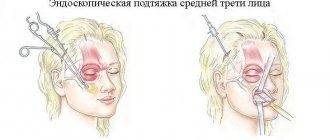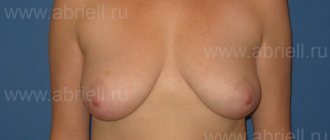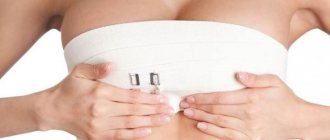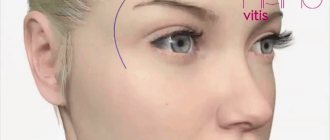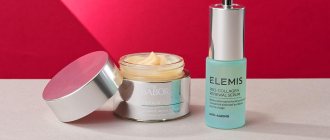- home
- Facial plastic surgery
- Rehabilitation and possible complications with facial plastic surgery
Recovery in the postoperative period depends on many individual characteristics and occurs at different speeds, so the final cosmetic effect may not be visible in the near future after surgery. The duration of recovery after surgery depends on the regenerative abilities of the body and the development of complications during the recovery period. Temporary deviations that occur during the recovery period (bruises, swelling, etc.) do not constitute damage to health, since they can be subsequently normalized.
In the postoperative period, patients are recommended to:
During the first 2 days you need to sleep on your side, placing a thick pillow under your head, periodically alternating sides. Over the next 2 weeks, it is advisable to sleep in a supine position.
To prevent the development of hyperpigmentation of scars, it is necessary to protect the skin from exposure to sunlight for 2 months after surgery.
To prevent secondary infection, you can take antibiotics as prescribed by your doctor. In the first 3 days after surgery, it is recommended to apply ice through a towel for 30 minutes to the operation area 3 times a day.
Any pain that arises in the first days after surgery will be relieved by taking one of the medications: Pentalgin or Nise, 1 tablet each. To reduce the intensity of swelling and restore damaged tissues, it is recommended to take the drug “Traumel-S” 1 tablet x 3 times a day. The course of treatment is 2-3 weeks.
From 5-6 days after surgery, to reduce the manifestations of swelling and possible bruises, it is recommended to apply Traumeel-S cream locally to the cheeks and neck, avoiding contact with the eyes and scars.
To improve tissue restoration in the surgical area, reduce swelling, and have a significant lymphatic drainage effect in the surgical area, a course of procedures using the Khivamat-200 system is recommended from 4 days after surgery.
It is forbidden to wet or remove bandages on your own, expose the surgical area to heat, or apply solutions, creams and ointments to the scars and surgical area that have not been approved by the doctor.
If body temperature rises to 38C in the first 3 days after surgery, sharp pain appears in the surgical area, or the bandage gets wet with blood, you must inform the doctor by phone 8-925 772-23-78 or 8-926-296-27-64.
Incisions and stitches after a circular facelift
During a facelift procedure, surgeons make incisions in the area of the hairline, in front of the tragus of the ears. Even if scars form after surgery, they can be hidden with hair by changing your hairstyle. Doctors try to make the incisions not straight, but zigzag - this makes it possible to avoid tightening of the skin, the scar will be barely noticeable.
Sutures are applied with threads of different thicknesses and structures; specialists use several techniques. The incisions that will be visible are stitched with intradermal sutures. In the scalp, a rougher and more superficial seam is used, because it is important not to damage the hair follicles.
Photo of the seam after blepharoplasty
The patient underwent circumferential blepharoplasty.
On the upper eyelids - resection blepharoplasty. The suture is located in the natural crease of the eyelid.
On the lower eyelids - blepharoplasty with subciliary access. The scar is located just below the eyelash line.
Photos after blepharoplasty (expand the gallery to full screen):
Caring for sutures after a circular facelift
After a facelift, the sutures are never removed at the same time; this manipulation is carried out in stages. Gradually, the sutures are replaced with special staples, which minimize the likelihood of scar formation. But in the postoperative period, the patient himself must strictly follow the doctors’ recommendations:
- personal hygiene - the sooner you start washing your hair, the faster the crusts that make the scar visible will disappear from the scar;
- elastic bandage - it must be worn to fix the tissues in the correct position, for about 3 weeks;
- a month after the facelift, you need to undergo a course of physical procedures that will speed up the entire rehabilitation process; this is not necessary, but it is desirable.
Patients must follow the rules of rehabilitation not only while in the hospital, but also at home. True, the recommendations in this case will be somewhat different.
Indications for deep facelift
Indications for this type of plastic surgery are:
- pronounced and deep nasolabial folds;
- sagging eyelid skin, drooping eyebrows, drooping outer corners of the eyes.
- drooping corners of the lips;
- movement of soft tissues from the middle to the lower area of the face (sagging cheeks);
- sagging and decreased density of facial tissues;
- shaved;
- double chin;
- sagging neck skin;
- deep wrinkles and folds of the middle and lower part of the face;
Facelift cannot be considered an alternative to contouring, injection methods of rejuvenation, mesotherapy and deep facial peeling. A deep facelift is performed for significant age-related changes, while less invasive cosmetic procedures can be used to eliminate fine lines, sagging skin and uneven skin. However, the combination of deep lifting with peeling, mesotherapy and resurfacing gives a more stable and pronounced rejuvenating effect, which is often used by cosmetologists in practice.
Competent rehabilitation and care for scars after a facelift
Surgeons strongly recommend observing the following rules:
- For the first 14 days after surgery, sleep on your back. This not only reduces swelling and pain, but also speeds up the healing process and minimizes the risk of developing inflammation.
- Sleep at least 6 hours a day , always at night. During sleep, damaged body tissues are restored much faster. It is important to follow a daily routine - physical activity is necessary, although very moderate. The best choice would be walking: blood circulation increases, tissues receive a sufficient amount of oxygen, which has a positive effect on regeneration processes.
- You can apply makeup no earlier than 10 days after surgery . The use of decorative cosmetics is minimal, no multi-layered use of foundation.
- After 25 days it is worth taking a course of lymphatic drainage massage . It must be performed by a specialist so as not to cause harm. Massage will help eliminate swelling.
Scars and scarring during facial plastic surgery
Surgery and subsequent suturing leads to the formation of scars on the patient's face. Healing of scars in the facial area occurs within 2-4 months. In the event of an unfavorable course of the healing process (prolonged redness of the scar, itching, thickening of the scar and its highlighting above the skin level, pigmentation) or an increase in the healing period, you must immediately notify the surgeon and the clinic and strictly follow all recommendations that will significantly reduce the risk of negative effects scarring.
The final result of the operation can be seen in 3-6 months.
How to deal with scars after a circular lift using pharmaceutical products
To make scars invisible, you need to use creams, ointments and gels. The following are considered effective :
- Dermatix - silicone gel and plates are suitable for the early postoperative period, when it is necessary to prevent the formation of a scar at the incision site. Apply twice a day, duration of use is at least 2 months.
- Imoferase - removes an already formed scar, prevents its growth, the first results will be noticeable only after 4 weeks of use. The total duration of the course is 2–3 months.
- Contractubex - this cream contains onion extract, it has a strong anti-inflammatory effect. Not suitable for old scars. A noticeable effect on fresh scars appears after 2 months of continuous use.
Particular attention should be paid to Fermenkol gel. It is able to get rid of scars and fibrosis in the deep layers of the skin. Gives positive results even with old scars. Doctors emphasize that Fermenkol gel should be used 2-3 weeks after surgery, when the wounds have completely healed. Application is simple - the gel is applied in a thin layer to previously cleansed dry skin and left until completely absorbed.
Contraindications for facelift
As with most surgical procedures, contraindications to a deep facelift include:
- acute inflammatory and viral diseases;
- increased body temperature;
- oncological diseases;
- diabetes;
- blood clotting disorder;
- mental disorders, epilepsy.
The most suitable age for a facelift is considered to be 45-60 years old. At a younger or older age, performing a deep facelift is inappropriate and not as effective.
Reviews about facelift
Thanks to numerous, brilliantly performed operations, the facelift method is very popular all over the world in a certain age category. Positive reviews about facelifts and photos demonstrating the effect of operations are available at any major plastic surgery clinic. Considering the specifics and complexity of facelift, the main merit of this popularity of the method belongs to experienced and highly professional plastic surgeons who make patients’ dreams come true.
When choosing a doctor and clinic for a facelift, you should be guided by the availability of their own developments and surgical techniques, effective rehabilitation programs and modern equipment in the operating department. Of great importance in this case is the possibility of carrying out alternative rejuvenating procedures in the clinic, since it is always advisable to consider more gentle methods first. Provided that the best option for the patient is a surgical facelift, the right choice of clinic and specialist is the key to the success of the operation.
Repeated facial plastic surgery after unsuccessful primary surgery
After facial plastic surgery, if the operation is not performed successfully, defects may remain such as:
- excess flabby skin of the face and neck - if the primary operation is not effective,
- elongated, deformed earlobes,
- lack of hair or displacement of the hairline in the temple area,
- rough, noticeable scars in the anterior and postauricular areas,
- unnatural, deformed contours of soft tissues in the surgical area,
- pronounced asymmetry in the surgical area.
Repeated facial plastic surgery allows you to successfully correct any errors of the primary operation, returning the face to its natural appearance and providing the desired result.
Patients often wonder why the effect of surgery ceased to be noticeable so quickly. In most cases, this question concerns the SMAS lift.
Unfortunately, not all people do their work efficiently. This statement also applies to plastic surgeons. Often, instead of SMAS lifting, regular skin lifting is performed, which does not affect deep structures. Of course, such an operation cannot provide a long-term effect, because the prolapse of the soft tissues will continue, again deforming the tightened skin.
Repeated tightening will help achieve the desired result. However, it is even better to try the first time to find a qualified surgeon who can perform the operation at a high level.
Possible complications after surgical facelift
If the patient takes responsibility for his health and strictly follows all medical recommendations after surgery, then the likelihood of complications developing is extremely low.
Sometimes during surgical facelift the following negative consequences are possible:
- swelling and hematomas (small ones go away on their own, larger ones require medical intervention);
- bleeding (most often occurs in the first 10 hours after surgery);
- infection and suppuration of sutures (failure to comply with the patient’s personal hygiene);
- hair loss in places where sutures are applied (goes away on its own after some time);
- necrosis or necrosis of skin areas (develops very rarely, more often in smokers, and therefore it is recommended to quit smoking at least 2 weeks before surgery);
- asymmetry or deformation of the face (inexperience of the surgeon, medical errors);
- The formation of keloid scars is a feature of some people. Preoperative examination and thorough examination helps to avoid this phenomenon;
- skin pigmentation (individual feature of patients’ skin; spots disappear on their own a few months after surgery).
A professional approach to facelift surgery, a focus on excellent aesthetic results and mutual understanding between the surgeon and the patient help to avoid possible complications and guarantee achievement of the goal - a young and toned face.
Facelift prices
The cost of a facelift operation is quite high, which is quite natural. The price of a facelift depends on the level of professionalism of the plastic surgeon, his fame and the capabilities of the clinic. And this is often directly proportional to the quality of the operation performed. Therefore, a deep facelift is not a procedure worth saving on.
| Neck and face plastic surgery (SMAS) facelift | RUB 149,000 |
| Endoscopic midface lift | RUR 79,000 |
| Endoscopic frontotemporal lifting | RUR 79,000 |
| Endoscopic frontotemporal and midface lifting | RUB 125,000 |
Find out more about facelift prices
The operation is over, what next? (step-by-step instructions for the patient)
A. Strictly follow the prescriptions and recommendations of the attending physician!!!
B. It must be remembered that the final result can be assessed after the complete disappearance of postoperative swelling, and not after removal of the sutures. During extensive operations involving extensive mobilization and excision of tissue (circular facelift, abdominoplasty, buttock lipografting, liposuction, etc.), postoperative swelling can persist for up to 4–6 months without early rehabilitation.
B. After any plastic surgery involving dissection (incision) of tissue, a scar always remains. The size, shape, and location of it are discussed and agreed upon during a preliminary consultation. All scars undergo “maturation” - a series of successive stages (from red to white (barely noticeable) scar). In any case, remember: the quality of any scar can be improved; any, even very noticeable, scars that cannot be treated conservatively can be veiled (permanent makeup, professional tattoo).
Unless otherwise recommended by your attending physician!!! That,
- To prevent the development of edema and seromas (subcutaneous accumulation of fluid), you need to wear (for 14 days around the clock, then 2 weeks only during the day) special (selected by your doctor) compression garments .
- The postoperative period is accompanied by pain, the severity of which depends on the individual characteristics of the body and the type of operation performed. In any case, pain after surgery must be adequately relieved (eliminate); it cannot be tolerated, since vasomotor (vascular) reactions may occur in the operated tissues, which can increase the early postoperative period. It is usually recommended to take oral non-narcotic analgesics: “ Ketanov ”, “ Ketorol ”, “ Solpadeine ”, etc.
- Sutures are removed 3-5 or 7-14 days after plastic surgery , depending on the type and volume of surgery. Before removing the sutures (strictly up to 3 days), it is necessary to avoid getting water on the postoperative sutures: during operations on the body, the head and intimate areas must be washed separately. It will be possible to take a shower only for 5-6 days. After operations on the face (circular lift), the head should not be washed strictly for 5 days (in rare cases, it is possible to use dry shampoo). Taking a bath (steaming) is strictly prohibited for 5 days.
- Postoperative sutures (if there are no open erosions and if this is recommended to you) must be treated with a semi-alcohol solution (40% alcohol, vodka) or an alcohol-containing skin antiseptic 2-3 times a day, blotting. In this case, it is necessary to use separate gauze (cotton) swabs for each postoperative incision. Treatment according to the method described above must also be carried out after taking a shower and bath.
- To areas of swelling and bruising it is necessary to apply 2-3 times a day: Lyoton - gel / or Dolobene gel / or heparin ointment (any ointment recommended by your doctor). Blot excess applied ointments with a paper napkin 30 minutes after application.
- If you are not allergic to the drug described below and if your doctor does not mind, to speed up rehabilitation (restoration of venous outflow, activation of lymphatic drainage - fight against edema ): it is recommended to take Detralex 1 t (500 mg) 3 times a day 5 days, then 1 tablet 2 times a day for 10 days. “Ascorutin” 1 tablet 3 times a day for 14 days, “Traumel S” 1 tablet every 1.5-2 hours under the tongue until completely absorbed (6-8 tablets per day) for 10 days, then 1 tablet 3 once a day for 5 days. "Lymphomyosot" 10 drops 3 times a day for 10 days
- As an early rehabilitation , it is recommended to carry out daily or every other day under the supervision of a medical professional: Microcurrent therapy in combination with low-intensity magnetic laser therapy and ultrasonic lymphatic drainage . Manual lymphatic drainage massage, LPG can be started no earlier than after 3 weeks.
- If necessary, you may be prescribed antibiotic therapy . The specific regimen, dosage, and method of taking the drug will be specified by your attending physician in the recommendations.
- It is prohibited to independently remove bandages, remove scabs from the incision line, apply ointments, creams, or other medications that were not prescribed by your doctor.
- It is necessary to exclude active physical activity, lifting weights, playing sports and fitness, visiting saunas, baths, taking hot baths, unless you are advised otherwise for 30-45 days after surgery.
- It is necessary to avoid direct sunlight on the area of the surgical incision and skin-subcutaneous mobilization, avoid visiting solariums and hot countries for up to 2 months after surgery due to the possibility of hyperpigmentation in the operation area. After removing the stitches, it is recommended to use cosmetics containing SPF protection of at least 30.
- It is extremely important to optimize the tactics of rehabilitation and aesthetic restoration to attend all postoperative examinations of a plastic surgeon: this is 1; 3; 5 or 7 days, examination after 2-3 weeks, 1 month, 3 months and a year after surgery.




